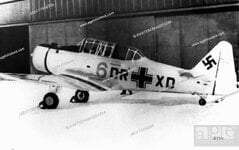If we inflate this and add the other 98 cents ;So after going back and thinking about this, I don't think we can nail down a single aircraft that turned the tide of the war. Why? There were so many different aircraft and so many different roles. To say one had a greater impact over the other is pretty much impossible.
What if the Soviets did not have the Sturmovick?
What if the British did not have the Spitfire (the German's may not have been able to launch an invasion, but they did not know that at the time, and it was still instrumental in winning the BoB)?
What if the US dis not have the P-51 to escort the bombers?
What if the US did not have the Dauntless in the Pacific?
What if the US did not have the B-17 or B-24 and had to bomb Germany with B-18s?
What if the allies had not had the PBY or Sunderlands in the Battle of the Atlantic?
Just my two cents…
Would the Dauntless have had the run it did at Midway if the torpedo bombers had been behind rather than coming in first ?
Would the P-51 had such an effect if the four engined bombers were not with it to force the Luftwaffe to come out ?
The list goes on but aircraft were generally part of a whole - combined arms etc.

